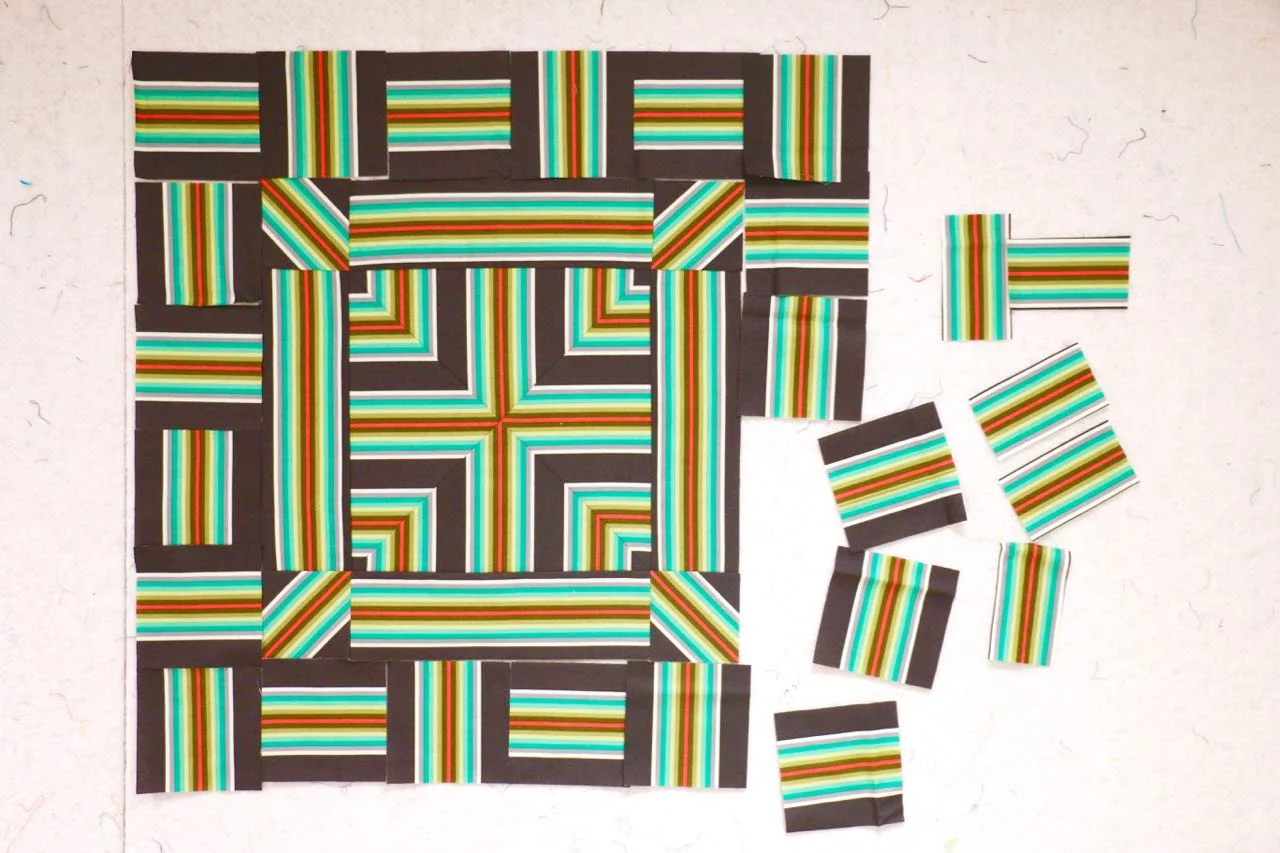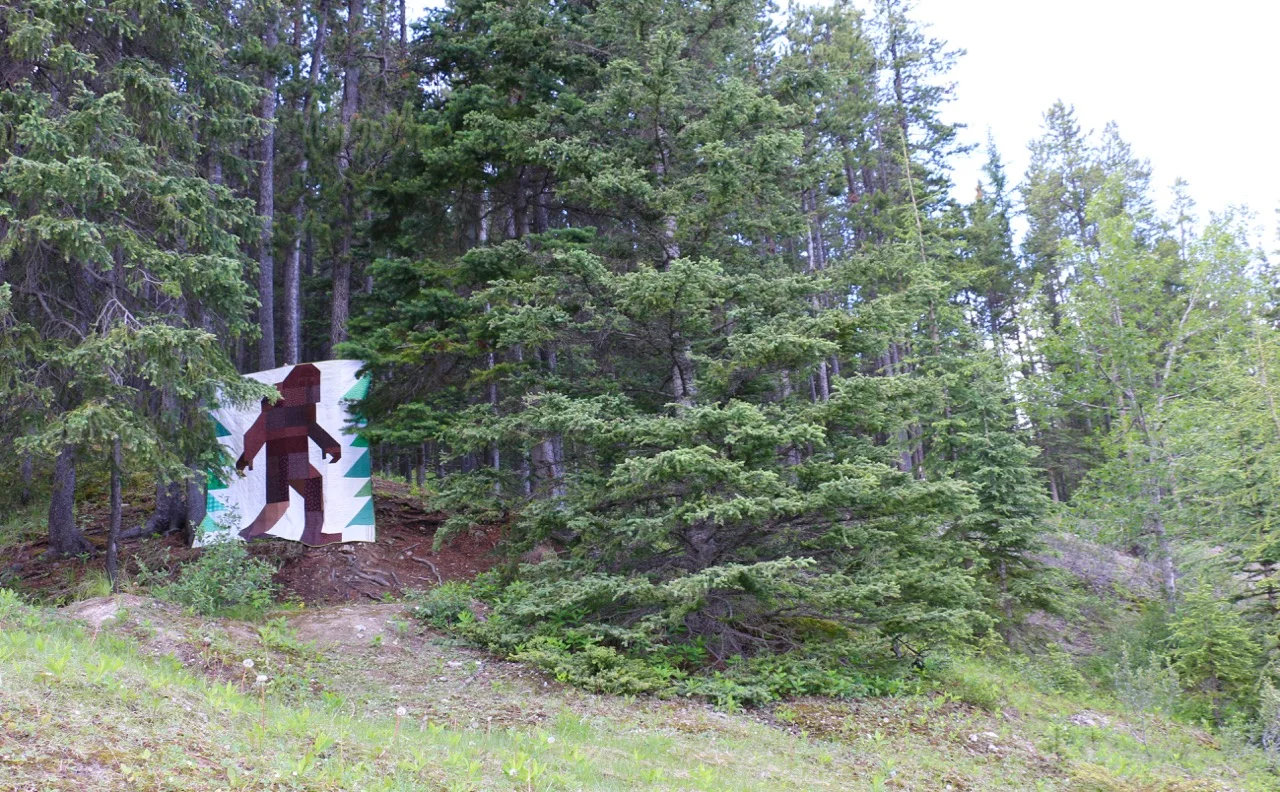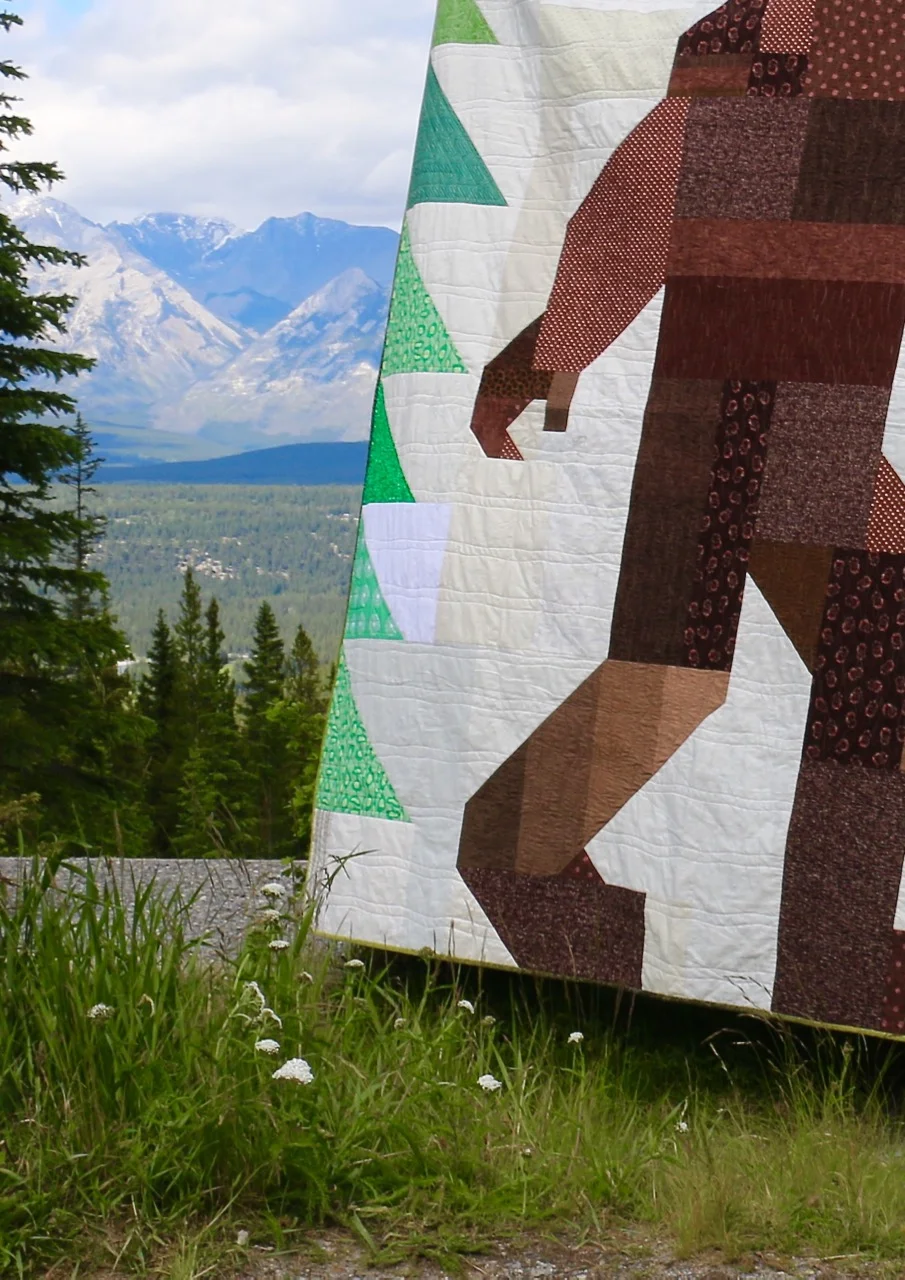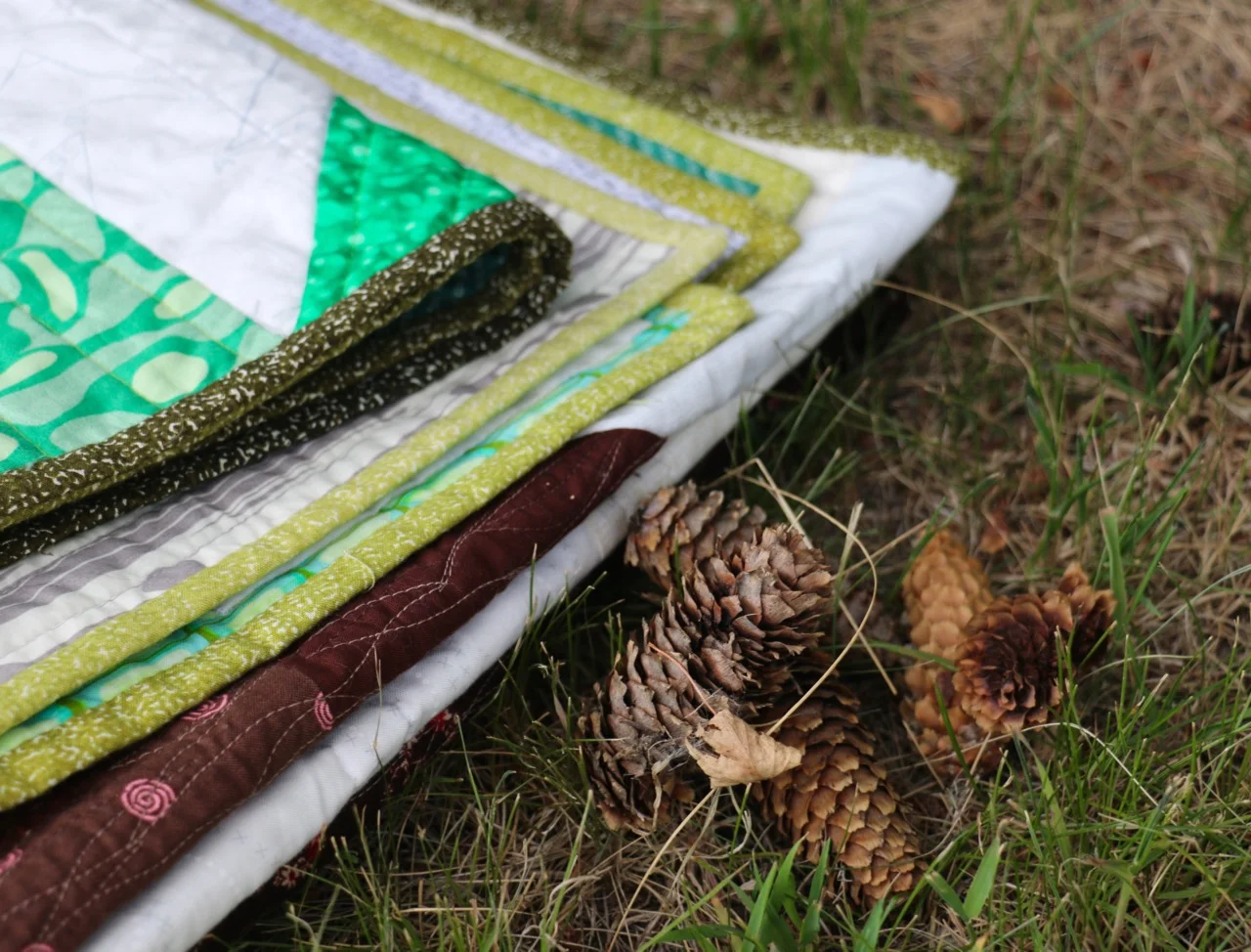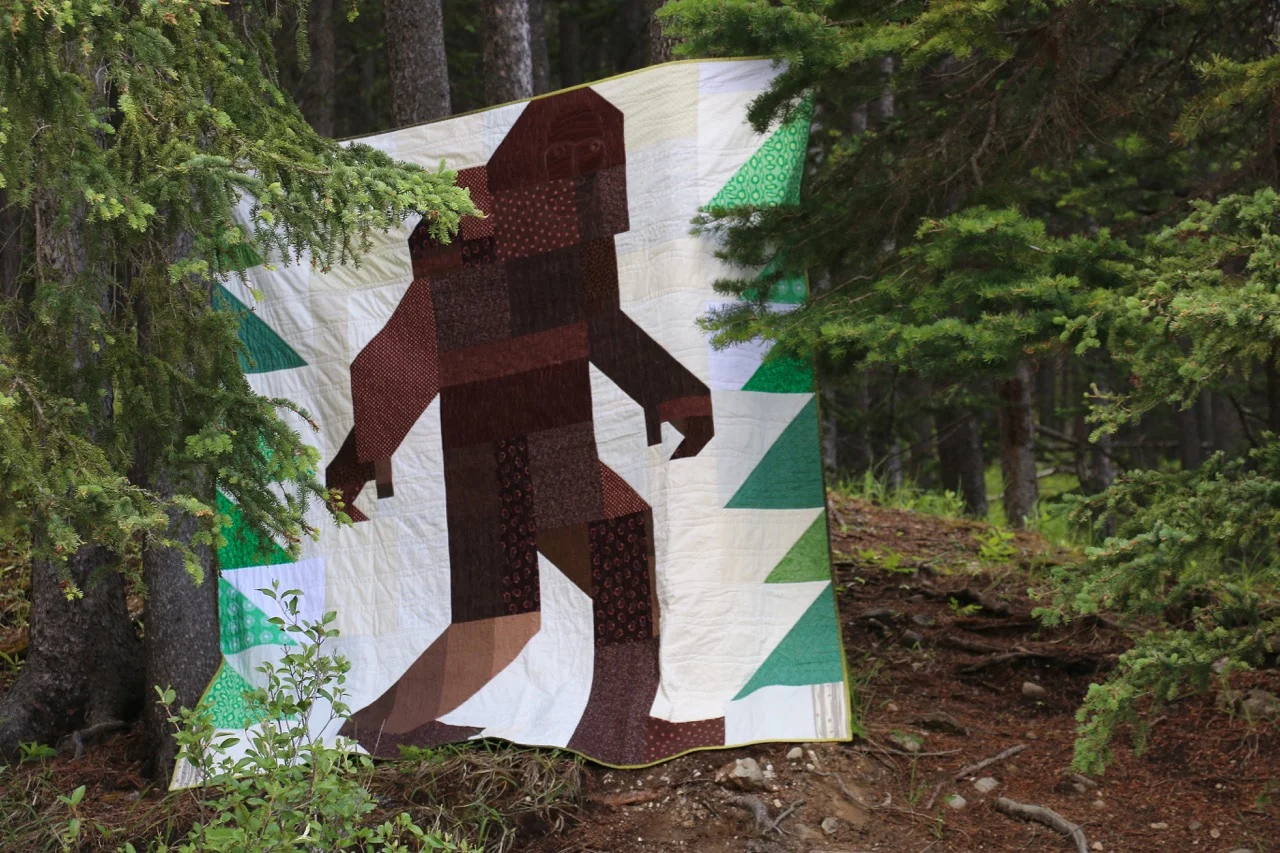So, what exactly did we do all day?
Simply put, we looked at each and every quilt submitted for judging at QuiltCon. It wasn't a free for all with a stack of quilts though, there was a very defined process that kept us on track and made it as fair as possible for the entrants. Here is the run down on the process, from my perspective. Keep in mind that we were judging quilts already juried in to the show and we did not have any role in the jury process.
- Each category was stacked on the tables, one category at a time. And we could only see the category we were working on, no others.
- The quilts for the entire category were fanned so we got a first look at each of them. This gave us an idea of the category as a whole and the quilts in comparison to the others.
- Each individual quilt was held up for viewing. We stood about 12 feet away. This way we got an idea of what it is like hung. You can see a lot in terms of design, composition, and colour when the quilt is hung and you view from a distance. (Not unlike how you would see it in a show.)
- As the quilt was held up the name of the quilt, and only the name, was said. We did not get descriptions or artists. This judging is blind so we had no idea who made what quilt. We could ask for descriptions, but we maybe asked about a dozen times over the 3 days - only if we were trying to determine whether the quilt was an original design or if the intent of the artist wasn't necessarily clear from the quilt alone.
- Then each quilt was laid down on the table for us to inspect it up close. We would look at everything - quilting stitches, construction techniques, edge finishing, pressing, whether the quilt edges were straight, fabric selection. Trust me, no one has ever looked at the quilts this closely!
- As we examined the quilts we were guided by category specifications that the MQG put together. These outlined the general and specific things to look at in the quilt - from overall design items to quality of the binding.
- Each quilt got at least 3 comments from the judges. We worked together to provide constructive criticism and compliments for each quilt. Scribes wrote down, by hand, our comments. Sometimes we would provide a little + next to one of the category specifications. This meant the work was done particularly well on that specification.
- As we went we would decide if a quilt should be held for an award or released. At the end of seeing all the quilts for a category the held ones would be placed back on the tables for us to see all together. Then began the process of determining winners.
- Winners were determined by consensus among the judges. We would narrow down the field further, discuss a lot, and eventually get to the top ones in the category. Sometimes this took a lot of discussion and time, but it was always worth it to get to agreement.
(It should be noted that the winners for the Glitz challenge and EZ Triangle Challenge were chosen by Michael Miller and EZ Quilting, we only provided the top choices for them to pick from.)
- Best in Show was picked from the winners of each category.
Phew. Are you tired just reading that? It was both exhausting and exhilarating to do this. Overwhelming and inspiring.
Judging is just that - judgement. It is subjective and critical. As I said, no one, even the maker, has likely looked at their quilts as close as we did. Call us the quilt police if you want - we did get nitpicky on things like quilting starts and stops and shadowing in seams - but that was our job! These quilts were there to be judged, so that's what we did. Our comments should be viewed as constructive because it was never our intent to make anyone feel bad about their quilt. We can all benefit from a critical eye and having aspects of our quiltmaking to improve upon.


